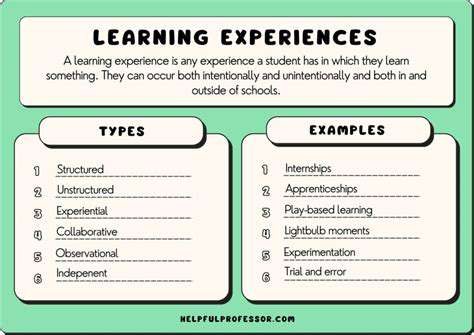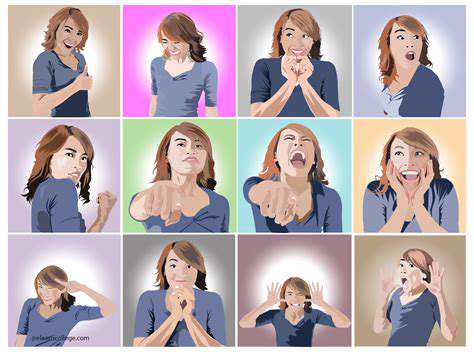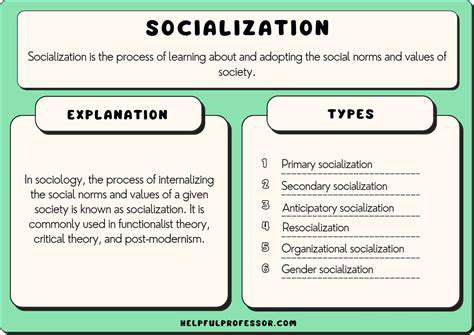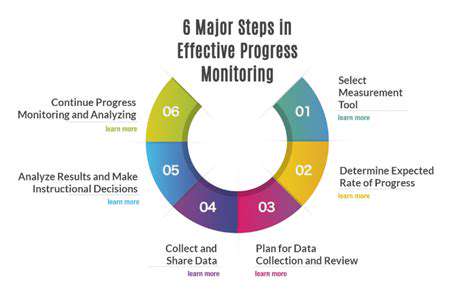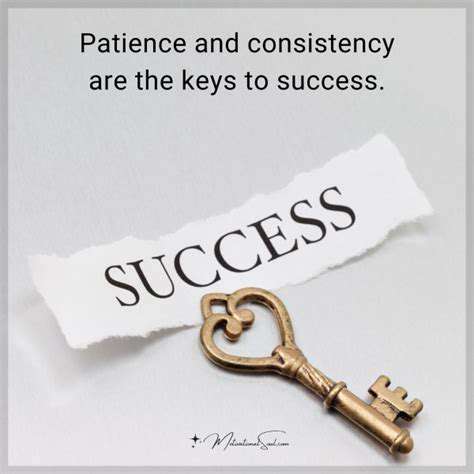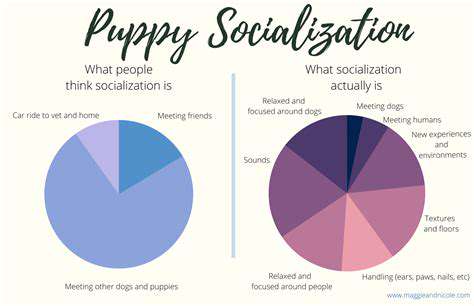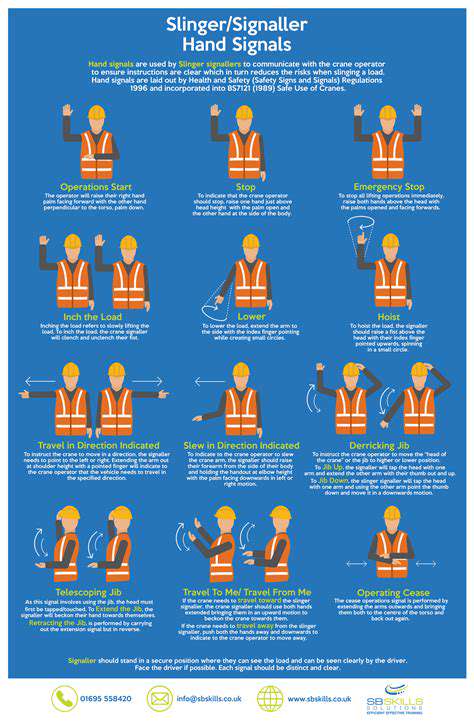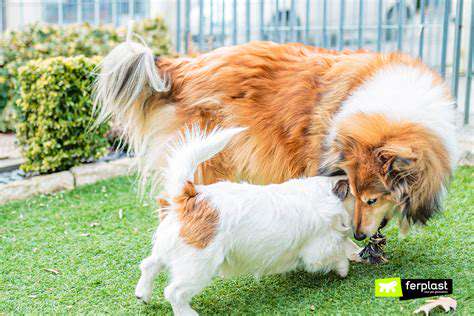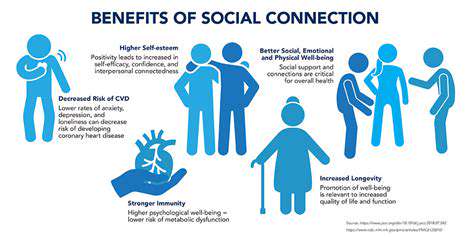Teaching Your Puppy to Sit: A Simple Step by Step Guide

Using Positive Reinforcement Techniques
Understanding Positive Reinforcement
Positive reinforcement is a powerful training method that focuses on rewarding desired behaviors rather than punishing unwanted ones. This approach fosters a positive and collaborative relationship between you and your puppy, making learning a more enjoyable experience for both of you. Understanding this fundamental principle is crucial for effective training. Positive reinforcement isn't just about treats; it encompasses any reward that your puppy finds motivating, like praise, petting, or a favorite toy.
Identifying Motivational Rewards
Every puppy has different preferences. The key to successful positive reinforcement is identifying what motivates your particular puppy. Some puppies are highly food-motivated, while others might be more enthusiastic about toys or praise. Experiment with various rewards to discover what consistently gets your puppy's attention and encourages the desired behavior. Observe your puppy's reactions to different rewards; a happy tail wag or enthusiastic response indicates a strong motivational connection.
Breaking Down the Sit Command
Breaking down complex behaviors like sit into smaller, achievable steps is essential for success. Start by associating a cue word, such as sit, with the desired position. Begin by holding a treat near your puppy's nose, then slowly move your hand up and back over its head, gradually changing its body position from a standing to a sitting posture. As your puppy sits, immediately mark this desired behavior with a verbal marker (like yes!) and give a reward. Consistency is key in this process.
Building a Consistent Routine
Establishing a regular training schedule fosters a sense of predictability and helps your puppy learn faster. Set aside dedicated time each day for training, even if it's just for 10-15 minutes. Consistency in your approach, time, and rewards will significantly increase the learning speed and effectiveness. Regular training sessions build a positive association with the training process. Remember, short, frequent sessions are more effective than long, infrequent ones.
Reinforcing the Sit Behavior
Once your puppy demonstrates the sit command consistently, it's important to reinforce this behavior in various environments. Gradually increase the difficulty by training in different locations and distracting your puppy with toys or other elements. Use the same positive reinforcement techniques, consistently rewarding each correct sit command. Be patient and understand that mastery of the sit command takes time and repetition. Celebrating each success, no matter how small, is critical to maintaining enthusiasm and motivation.
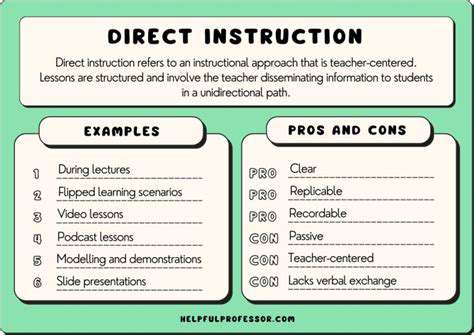
Reinforcing and Refining the Sit Command
Understanding the Sit Command
The sit command is a fundamental aspect of dog training, serving as a crucial building block for more complex behaviors. It teaches your puppy essential obedience, allowing for better control and safety in various situations. Understanding the concept of positive reinforcement and using clear, consistent cues will set the stage for a well-behaved and responsive canine companion.
Choosing the Right Training Environment
Selecting a quiet, distraction-free environment is paramount for initial training. Avoid areas with lots of noise, movement, or other dogs. Your puppy's attention span is limited, and a calm environment will allow them to focus on learning the command effectively. A well-structured training space greatly increases the chances of success in teaching the sit command and other basic obedience skills.
Using Positive Reinforcement
Positive reinforcement is the cornerstone of effective dog training. Use high-value treats, toys, or praise to reward your puppy for desired behavior. Consistent positive feedback helps your puppy associate the action of sitting with a positive experience, motivating them to repeat it. This method fosters a strong bond between you and your furry friend while ensuring a positive learning experience.
The Importance of Clear Cues
Ensure your hand signals and verbal cues are crystal clear and consistent. A simple hand gesture, like slightly lowering your hand in front of your puppy's nose, coupled with the word sit, will help them associate the action with the command. Repetition is key; each successful attempt should be reinforced with praise and treats.
Maintaining Consistency in Training
Consistency is vital for your puppy to grasp the sit command quickly and reliably. Utilize the same verbal cue and hand signals every time. This predictability reinforces the association between the action and the command, facilitating faster learning. Inconsistency can confuse your puppy and hinder their progress.
Addressing Common Challenges
Puppies may initially struggle to understand the command. Be patient, consistent, and avoid harsh corrections. If your puppy seems distracted, try moving to a quieter location. If the problem persists, consult with a professional dog trainer for personalized guidance. It's important to address challenges effectively to maintain a positive training experience for both you and your furry friend.
Gradually Increasing Difficulty
Once your puppy masters the sit command in a quiet environment, you can gradually increase the difficulty by introducing distractions. Start in a quiet area, then gradually increase the level of environmental stimulation. This process builds on the foundational skills, allowing your puppy to perform the command in progressively challenging circumstances. This approach ensures the command is reliable in diverse situations.
Read more about Teaching Your Puppy to Sit: A Simple Step by Step Guide
Hot Recommendations
- The Impact of Early Socialization on a Dog's Interaction with Other Animals
- Car Travel and Puppy Socialization: Making the Journey a Positive Experience
- The Importance of Early Environmental Exposure for Puppy Development
- Taking Your Puppy to the Vet: Positive Socialization Strategies
- Making Training a Positive Experience for Your Puppy
- Public Transportation and Puppy Socialization: A Step by Step Guide
- Safe Socialization: Allowing Others to Pet Your Puppy
- Helping a Puppy Who Struggles with "Stay"
- Positive Puppy Interactions: Making Meetings with New Friends Fun
- No Treats Needed? Training Basic Commands with Verbal Praise
